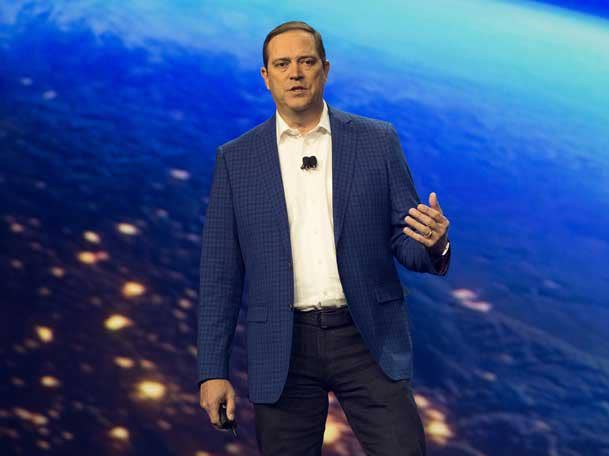Cisco’s Chuck Robbins: ‘Great Opportunities’ Ahead As Businesses Race Toward Digital Transformation
The tech giant says that over the past several quarters its business has shifted to better meet the needs of customers in the wake of the pandemic. Cisco also announces that tech veteran R. Scott Herren will be coming in December as the company’s new CFO.

Cisco Systems is seeing its customers around the globe compress years’ worth of IT evolution into just a few months as companies rethink their businesses and have more distributed workforces than ever before as a result of the COVID-19 pandemic, according to Cisco Chairman and CEO Chuck Robbins.
Cisco in August revealed it would be accelerating its research and development to focus on delivering everything it can as a service and cutting more than $1 billion in costs. The company finished issuing its early retirement offers to select executives last month. At the same time, the tech giant is making steady progress in its shift to software and services as more businesses adopt a hybrid approach to IT, Robbins said during Cisco’s Q1 2021 earnings call.
“Over the last two quarters, we’ve successfully adjusted to new demands by making necessary changes and shifts within our business,” Robbins said. ”We see many great opportunities ahead as every company in every industry accelerates to a digital-first strategy.”
Also during Cisco’s fourth quarter 2020 fiscal earnings call in August, Robbins announced that Cisco CFO Kelly Kramer would be retiring after the company identified her successor. Robbins on Thursday announced that AutoDesk CFO R. Scott Herren will be joining Cisco as the company’s new CFO as of Dec. 18.
[Related: Chuck Robbins: 9 Biggest Remarks On 5G, Edge Computing, Webex And COVID-19 Consequences]
The majority of Cisco’s revenue still comes from corporate and government data centers and campus environment hardware, however spending on cloud services has increased as COVID-19 is still forcing many employees to work from home. Cisco saw a 5 percent increase in public sector orders year over year, while ordering was down in enterprise, commercial and service provider segments.
“I’m not too concerned about [enterprise] honestly,” Robbins told investors, noting a ”significant improvement” in commercial orders, which fell 8 percent during Q1 2021 compared to its 23 percent dip in Q4 2020. ”This gives us a fair amount of optimism and I think enterprise will be fine.”
The San Jose, Calif.-based tech giant’s product revenue fell 13 percent year over year, while services revenue rose 2 percent. Subscriptions now account for 78 percent of Cisco’s software revenue.
Robbins told investors to expect more technology being served up as a service to give customers more flexibility and choice.
Cisco's security segment continued to be a bright spot in the tech giant’s financials, rising 6 percent during the first quarter of 2021 to $861 million, driven by the strong Cisco Umbrella and Duo offerings, said Kramer, who has been with Cisco for more than eight years.
The company’s applications business segment, which includes AppDynamics and Cisco’s videoconferencing and collaboration portfolio, fell 8 percent to $1.38 billion in revenue in the first quarter, which Kramer attributed to revenue declines in UC and telepresence endpoints. However, Robbins said that Cisco Webex in October had 600 million meeting participants; “almost double the number we had in March,” he added.
“As many [businesses] look to adopt hybrid work models … we’re focused on helping them deliver consistent experiences, whether working remotely, or in the office, from connectivity, to collaboration, to security,“ Robbins said.
Cisco’s infrastructure segment, which includes the core switching and routing businesses as well as wireless and data center products, continued its double-digit decline, falling 16 percent during the quarter to $6.34 billion in Q1 2021. Both Robbins and Kramer attributed the decline to data center and campus networking revenues. Cisco said in past fiscal quarters that the infrastructure segment was the hardest hit business unit by the COVID-19 pandemic, which impacted global IT spending.
However, Cisco saw “encouraging” signs during the quarter as some large customers continued to modernize their infrastructure, Robbins said.
For the fiscal first quarter of 2021, which ended Oct. 24, Cisco’s revenue declined for the fourth quarter in a row, falling 9 percent to $11.93 billion compared to $13.16 billion in the year-ago quarter. Cisco’s non-GAAP net income of $3.21 billion declined from $3.61 billion in Q1 2019.
Cisco beat Wall Street’s revenue expectations of $11.85 billion for the quarter. The tech giant’s stock jumped more than 8 percent on news of its earnings beat in after-hours trading on Thursday evening.